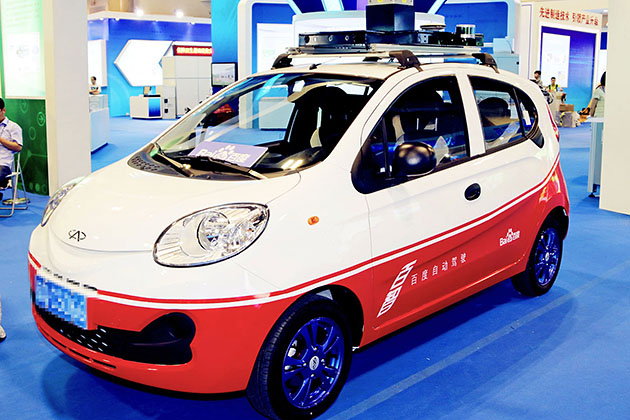Baidu, China’s search engine and recognized by Forbes on World’s Most Innovative Companies List has opened its machine learning tools to the Internet’s AI community following in the steps of other Microsoft, Google and Facebook.
Andrew Ng, Chief Scientist at Baidu is also the former inventor of Google’s RankBrain. Baidu’s version of Rankbrain is called PaddlePaddle and the big claim is that it’s easier to use than rival Google.
For more than a decade, Baidu has been the top provider of search for China’s Internet population. Now Chief Executive Officer Robin Li‘s top priority has shifted to online-to-offline services and connecting Baidu’s millions of users to businesses around world. But what’s most interesting is that much of the research for Baidu’s future is actually not done in Beijing but in Silicon Valley, right in Google’s backyard.
The Search AI tool is called PaddlePaddle is now open source. Baidu says that the advantages the tool has over its western rival is its simplicity, calming that is more approachable for new comers.
Xu Wei, leader Of the PaddlePaddle development team said that before wide adoption of the product can happened engineers and developers need to have an easy to use framework. Adding that an example of this its its kit tool machine translation which requires less than 25 percents of the coding of its rivals.
Baidu’s code, called Warp-CTC, is essentially an improved implementation of a deep-learning algorithm developed some time ago that’s been designed to run very quickly on the latest computer chips. A startup called Nervana, which offers a deep-learning framework to companies that cannot or do not want to develop their own, is already using Warp-CTC as part of its technology.
Called Baidu Venture, the new company will focus on early-stage projects in artificial intelligence and other next-generation technologies, such as augmented reality and virtual reality, according to a statement from Nasdaq-listed Baidu.
Second Quarter 2016 Operational Highlights
-
Mobile search monthly active users (MAUs) were 667 million for the month of June 2016, an increase of 6% year-over-year
-
Mobile maps MAUs were 343 million for the month of June 2016, an increase of 13% year-over-year
-
Gross merchandise value[2] (GMV) for Transaction Services totaled RMB18.0 billion ($2.7 billion) for the second quarter of 2016, an increase of 166% year-over-year
-
Baidu Wallet activated accounts reached 80 million at the end of June 2016, an increase of 131% year-over-year
In the recent Baidu World Conference, which is the company’s annual biggest event to showcase its latest technology, Li again stressed the importance of AI.
“Artificial intelligence is the next big development in the internet industry, which is the core of Baidu. We have made a great effort in developing this technology over the past five to six years,” he said.
Many of the areas Baidu is betting on, such as driverless car and Duer, a Siri-like voice assistant, all depend on the development of AI.

The move by tech companies who make complex IA programs available to the public is to shape the development of a rapidly growing field while still allowing the firm’s to find new talents.
>>>>>>>>>>>>>>>>>>>>>>>>>>>>>>>>>>>>>>>>>>>>>>>
About Baidu Research
Baidu Research brings together top researchers, scientists and engineers from around the world to work on fundamental AI research. Research areas include image recognition, speech recognition, natural language processing, robotics, and big data.
Baidu Research is composed of three interrelated teams:
Big Data Lab
Institute of Deep Learning
Silicon Valley AI Lab
Additional technical information about PuddlePuddle
— for geeks 🙂 —
Features
- FlexibilityPaddlePaddle supports a wide range of neural network architectures and optimization algorithms. It is easy to configure complex models such as neural machine translation model with attention mechanism or complex memory connection.
. - EfficiencyIn order to unleash the power of heterogeneous computing resource, optimization occurs at different levels of PaddlePaddle, including computing, memory, architecture and communication. The following are some examples:
- Optimized math operations through SSE/AVX intrinsics, BLAS libraries (e.g. MKL, ATLAS, cuBLAS) or customized CPU/GPU kernels.
- Highly optimized recurrent networks which can handle variable-length sequence without padding.
- Optimized local and distributed training for models with high dimensional sparse data.
.
- ScalabilityWith PaddlePaddle, it is easy to use many CPUs/GPUs and machines to speed up your training. PaddlePaddle can achieve high throughput and performance via optimized communication.
. - Connected to ProductsIn addition, PaddlePaddle is also designed to be easily deployable. At Baidu, PaddlePaddle has been deployed into products or service with a vast number of users, including ad click-through rate (CTR) prediction, large-scale image classification, optical character recognition(OCR), search ranking, computer virus detection, recommendation, etc. It is widely utilized in products at Baidu and it has achieved a significant impact.
Documentation
- Chinese Documentation
- Quick Start
You can follow the quick start tutorial to learn how use PaddlePaddle step-by-step. - Example and Demo
We provide five demos, including: image classification, sentiment analysis, sequence to sequence model, recommendation, semantic role labeling. - Distributed Training
This system supports training deep learning models on multiple machines with data parallelism. - Python API
PaddlePaddle supports using either Python interface or C++ to build your system. We also use SWIG to wrap C++ source code to create a user friendly interface for Python. You can also use SWIG to create interface for your favorite programming language. - How to Contribute
We sincerely appreciate your interest and contributions. If you would like to contribute, please read the contribution guide.
For full documentation go to https://github.com/baidu/Paddle

One thought on “Baidu follows US tech giants and opens Artificial Intelligence Tools”